MediaTek Announces Dimensity 9000: Supercharged Flagship SoC on 4nm
by Andrei Frumusanu on November 18, 2021 6:00 PM EST5th Generation APU/NPU, a Massive ISP, and New 5G & WiFi
APU/NPU AI/ML Upgrades
Moving away from CPU and GPU, we find MediaTek’s new “APU”, or AI Processing Unit, or rather NPU as we more generically tend to call it nowadays. MediaTek always had one of the earliest in-house implementations of such an IP, and the Dimensity 9000 now implements the 5th generation of such an IP.
MediaTek promises a +400% performance and power efficiency improvement over the previous generation Dimensity 1200 implementation, which is quite a step-up, however should be contextualised to other more performant competitor platforms.
The company had made one slide available of showcasing MLPerf against Apple’s A15, noting +108% at +75% power efficiency versus the iPhone chip, the company here actually quoted our own published MLPerf figures, however we’ll avoid using the slide as the comparison isn’t great as the iOS variant of the app isn’t fully optimised and doesn’t take advantage of CoreML acceleration.
A more apples-to-apples comparison would be the ETHZ Ai Benchmark across Android devices, here the chip should take advantage of all accelerator blocks including CPU, GPU and NPU, and the Dimensity 9000 is advertised to beat the Google Pixel 6 and the Tensor SoC, which recently had notably outperformed the competition. MediaTek doing even better here seems to be promising for ML performance of the SoC. Naturally, we’ll have to see more detailed benchmarks for a more thorough analysis of the ML performance, but it seems MediaTek has developed a quite solid contender here.
Media Pipelines & Massive ISPs
Moving onto the media side of things, MediaTek also throws in everything but the kitchen sink into the new SoC. We’ll get to the ISP in a bit, but in terms of video encoding and decoding, MediaTek supports all popular current codecs. There is no AV1 encoding yet, but the company says that the chip is the first in the industry to support 8K AV1 decoding – previous generation Dimensity and competitor SoCs only are able to do 4K decoding at the moment.
The display pipeline supports WQHD+ to 144Hz, or FHD+ to 180Hz with full HDR+ Adaptive (10-bit), so the chip should power the highest resolution and refresh rate screens out there.
Getting back to the ISP, MediaTek claims that the camera subsystem is massively revamped in this generation. The Dimensity 9000 features triple ISPs with the ability for concurrent operation, with the chip being able to push through 9 Gigapixels/s. We’re not sure exactly if the figures are comparable across the vendor claims, but Qualcomm’s Snapdragon 888 “only” supports 2.7GPixel/s. Interestingly enough MediaTek says this is only a 2x throughput increase versus the Dimensity 1200.
The Imagiq790 ISP claims to be the world’s first to support 320MP sensors and MediaTek claims they’re working closely with the sensor vendors to enable such functionality. We’ve heard last year about 200MP sensors when Qualcomm announced the Snapdragon 888, and in September Samsung had announced the HP1 at this resolution, though we haven’t seen devices with it yet.
In triple-camera operation, the ISP supports concurrent 32+32+32MP sensor operation. We’ve seen such operation become more popular in sensor-fusion like scenarios for computation photography, or concurrent video recording on multiple sensors.
The new ISP also vastly improves its capabilities in terms of bit-depth, as MediaTek now upgrades it to a full 18-bit pipeline. Although mobile image sensors today natively are barely 10- or 12-bit at most in terms of their ADC bit-depth, multi-exposure image stacking has become the norm, especially with sensors now also getting more advanced HDR techniques such as staggered HDR captures. The new higher bit-depth ISP now is able to better do exposure merging across multiple frames, with the Dimensity 9000 able to do 270 frames per second (at presumably 4K resolution) across three sensors on its three ISPs.
The raw throughput and processing power here would be immense, and a massive leap over any other current SoC in the market.
MediaTek says that they’ve improved the video pipelines as well, being able to tightly interact with the APU in a memory coherent fashion, bypassing the need to copy data over DRAM, increasing performance and decreasing bandwidth requirements and latency. Presumably vendors would be able to take advantage of the architecture to implement video recording with ML-based image processing models on-the-fly, essentially the same kind of technology Google had presented on its recent Pixel 6 phones and the Google Tensor chip.
Upgraded 5G Modem
On the modem side, MediaTek has had quite a lot of success with its recent 5G modem implementations. The new Dimensity 9000 modem upgrades things even further, advertising for the first time 3CC carrier aggregation with up to 300MHz of Sub-6 bandwidth, allowing for download speeds of up to 7Gbps.
The modem is fully compatible with 3GPP release 16, with one larger change being UL Tx switching, which allows for better uplink capabilities and utilisation of spectrum in multi-band 5G NR deployments.
MediaTek notes that its modem has been extremely power efficient compared to competitor products, and the Dimensity 9000 will continue on this patch by providing advanced power saving technologies.
Although the modem features all the bells and whistles for Sub-6 5G, it does still lack mmWave. MediaTek notes that this is simply a result of the market need and the company’s current customer focus. Currently, the US remains the only market where mmWave truly remains a critical feature, as most vendors opt to not even equip their global device variants with mmWave modules. The company admits that due to this, we’ll unlikely see US devices powered by the Dimensity 9000, and the company is fine with that compromise, as it tries to cater to and focus on vendors which serve the rest of the world. MediaTek noted that next year, we will see mmWave product announcements for the US market, but these will at first be in the low/mid-range line-up.
Finally, on the Wi-Fi side, MediaTek’s Dimensity 9000 platform also comes with their own in-house solution, now supporting Wi-Fi 6E for 6GHz band support, and 160MHz channel bandwidth, as well as Bluetooth 5.3. The GNSS solution now adds BDS-3 connectivity via B1C signals.


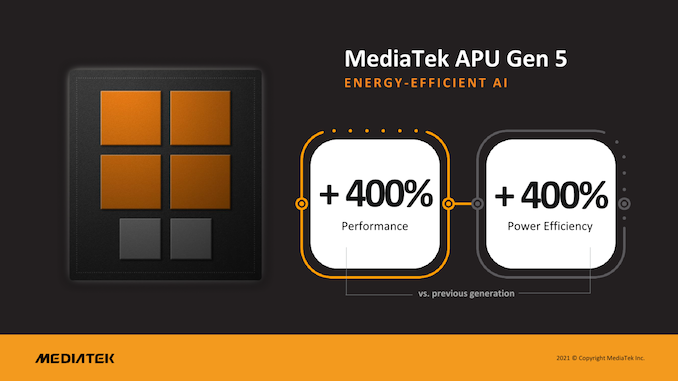


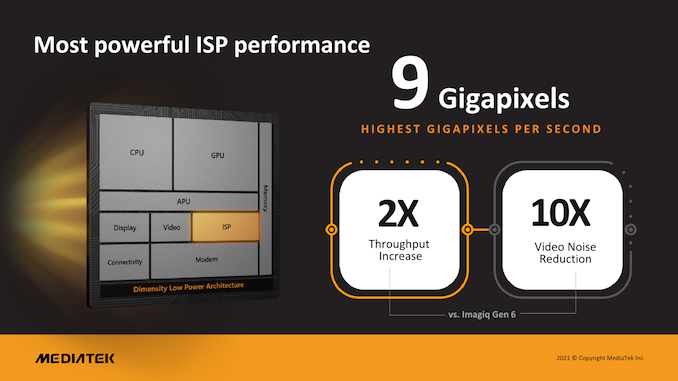
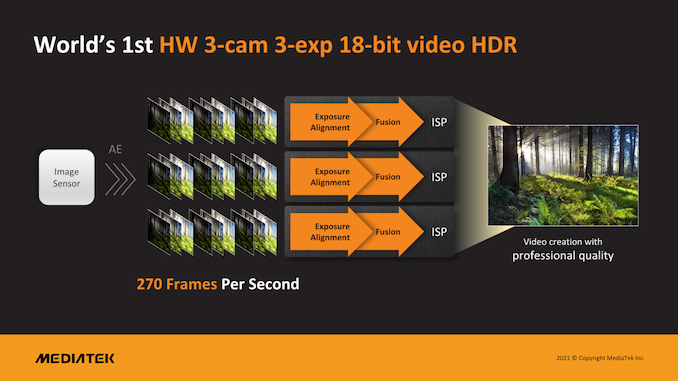
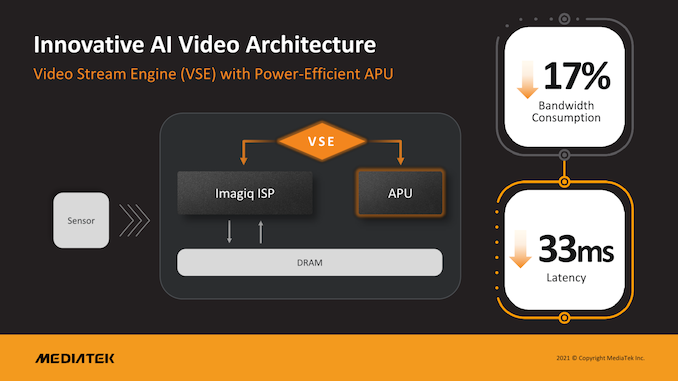

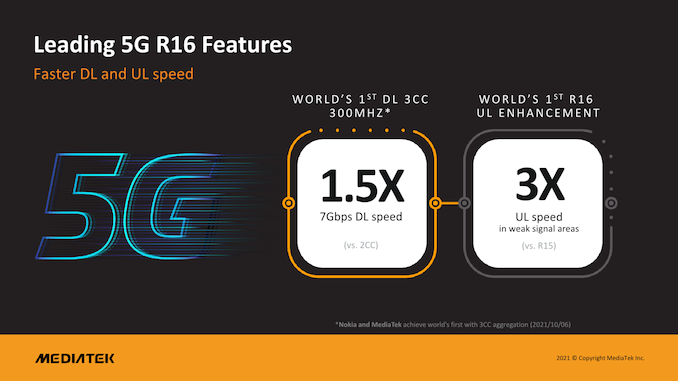
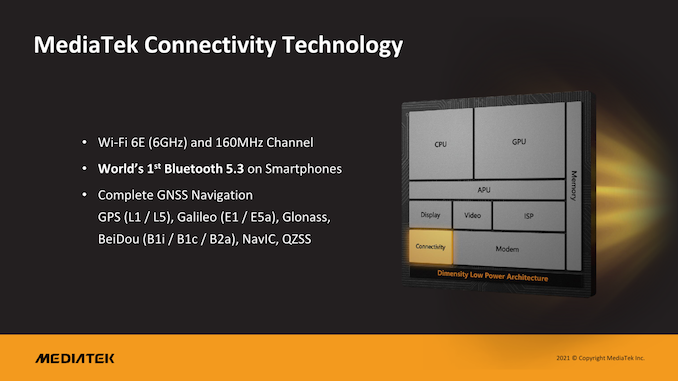








150 Comments
View All Comments
UNLK A6 - Tuesday, November 23, 2021 - link
Ah, I see the problem. I just looked at my screenshot that I used to make my original post. AnandTech changed the article! If someone can tell me how to post an image, I'll post the screenshot.UNLK A6 - Tuesday, November 23, 2021 - link
To see the original slides, they're still at 9to5google.com. Search for "Dimensity 9000".UNLK A6 - Tuesday, November 23, 2021 - link
...And notice they credit AnandTech for those images. What the heck AnandTech, how about a remark someplace that you changed the article!Wilco1 - Thursday, November 25, 2021 - link
Some other sites show a very different set of slides (with different layout and colors) and in one of those the bars are wrong indeed. However I never saw those slides on AnandTech eventhough I read the article fairly early as there were only a few comments. So if the wrong slides went live, it must have been for a short time.UNLK A6 - Friday, November 26, 2021 - link
So,- I take a screenshot of bogus MediaTek charts at 2021-11-18 at 5.28.18 PM (PST).
- I criticize AT for publishing bogus charts.
- AT switches out the charts for new ones. Who knows when or why?
- AT doesn't mention they did so in the article or in this thread.
- AT lets this thread play out making me look the idiot.
- I finally realize what happened by looking back at the charts and my screenshot. I prove that AT switched them by citing other articles sourcing the bogus charts to AT.
- AT still makes no comment here.
Classy, Andrei, classy. And you were someone whom I respected by engaging in the forum comments. Well, lesson learned.
mode_13h - Saturday, November 27, 2021 - link
> - AT still makes no comment here.You can't assume they read all the comments. I agree they should've noted when they update graphs, but your best option for complaining about it is either on Twitter or maybe you could try the "Forum Feedback" in the main forums. Unfortunately, the "Contact" link in the page footer just goes to some business-oriented page for the parent company.
UNLK A6 - Saturday, November 27, 2021 - link
Thanks for the thoughtful advice. I appreciate it.UNLK A6 - Sunday, November 21, 2021 - link
Oh, and you probably also vindicated MediaTek's strategy to mislead, which probably wasn't your aim.UNLK A6 - Sunday, November 21, 2021 - link
@Tomatotech, dividing the wrong way around is an easy mistake to make. I didn't need to be snarky and I apologize to you and other readers here. I wish I could edit out the snark. Mostly I wanted to ask the authors and editors to not publish junk charts from MediaTek (and others). Again, AnandTech, please don't publish this crap. Or better yet point out the glaring deception.Wilco1 - Tuesday, November 23, 2021 - link
There is no deception from MediaTek. You are the one dividing the wrong way, 35% uplift means 1.35 times the performance and thus 1.35 times the height, which is exactly what the graph shows.